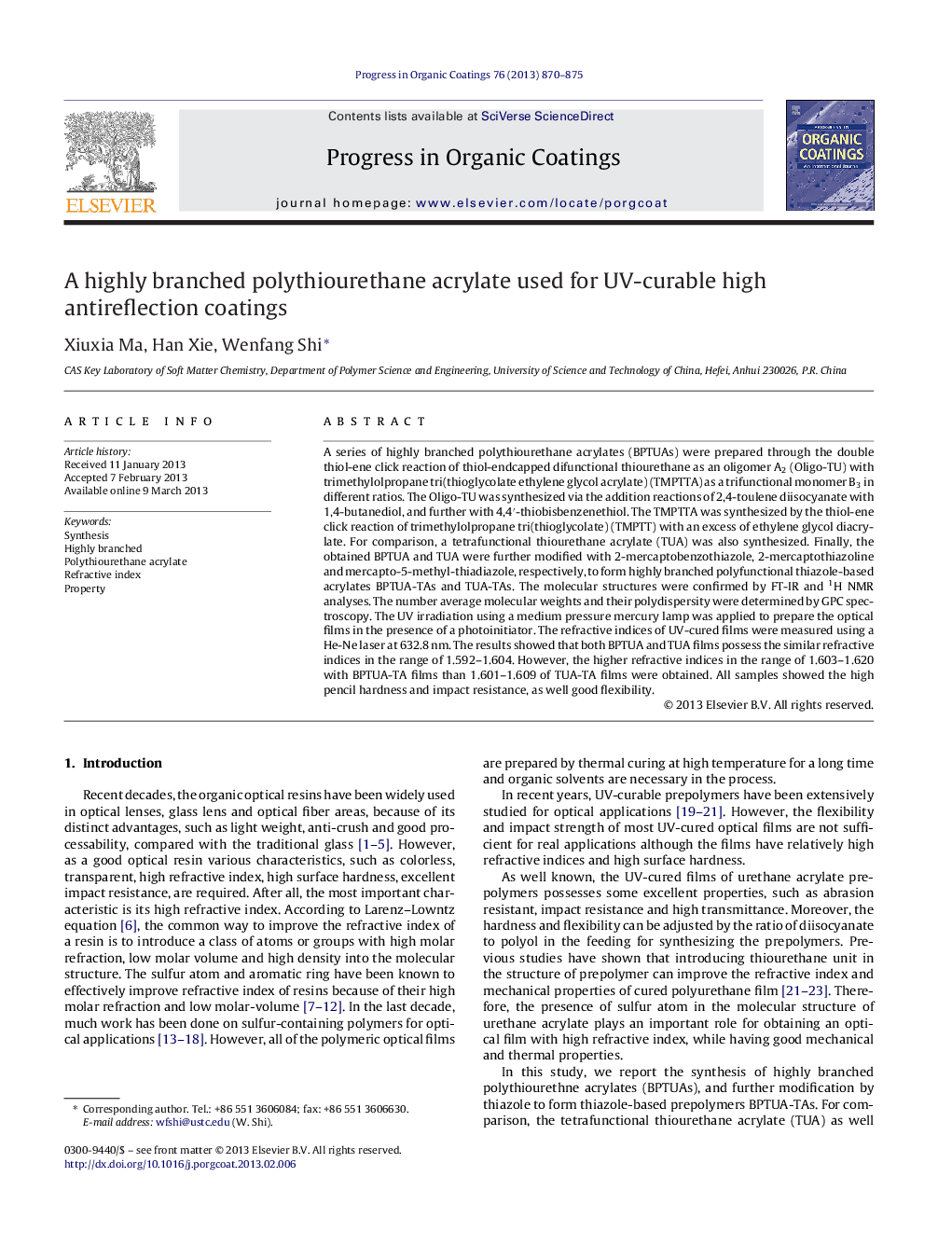| Article ID | Journal | Published Year | Pages | File Type |
|---|---|---|---|---|
| 693088 | Progress in Organic Coatings | 2013 | 6 Pages |
A series of highly branched polythiourethane acrylates (BPTUAs) were prepared through the double thiol-ene click reaction of thiol-endcapped difunctional thiourethane as an oligomer A2 (Oligo-TU) with trimethylolpropane tri(thioglycolate ethylene glycol acrylate) (TMPTTA) as a trifunctional monomer B3 in different ratios. The Oligo-TU was synthesized via the addition reactions of 2,4-toulene diisocyanate with 1,4-butanediol, and further with 4,4′-thiobisbenzenethiol. The TMPTTA was synthesized by the thiol-ene click reaction of trimethylolpropane tri(thioglycolate) (TMPTT) with an excess of ethylene glycol diacrylate. For comparison, a tetrafunctional thiourethane acrylate (TUA) was also synthesized. Finally, the obtained BPTUA and TUA were further modified with 2-mercaptobenzothiazole, 2-mercaptothiazoline and mercapto-5-methyl-thiadiazole, respectively, to form highly branched polyfunctional thiazole-based acrylates BPTUA-TAs and TUA-TAs. The molecular structures were confirmed by FT-IR and 1H NMR analyses. The number average molecular weights and their polydispersity were determined by GPC spectroscopy. The UV irradiation using a medium pressure mercury lamp was applied to prepare the optical films in the presence of a photoinitiator. The refractive indices of UV-cured films were measured using a He-Ne laser at 632.8 nm. The results showed that both BPTUA and TUA films possess the similar refractive indices in the range of 1.592–1.604. However, the higher refractive indices in the range of 1.603–1.620 with BPTUA-TA films than 1.601–1.609 of TUA-TA films were obtained. All samples showed the high pencil hardness and impact resistance, as well good flexibility.
► Highly branched polyfunctional thiazole-based acrylates (BPTUA-TAs) were synthesized. ► The UV-cured BPTUA-TA films showed refractive indices in the range of 1.592 to 1.620. ► All films have high pencil hardness and impact resistance, as well good flexibility.
